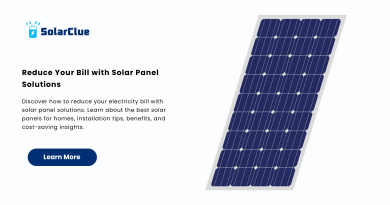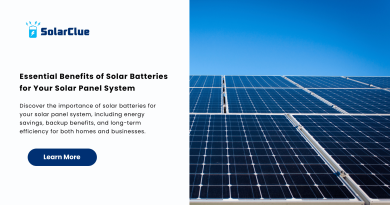Where Are The Most Solar Panels Located?
Solar power is rapidly becoming a significant player in the global energy landscape, with various countries leading the way in solar panel adoption. This blog post analyzes the global distribution of solar panels, highlighting the countries with the highest solar power capacity, the factors contributing to their success, and the potential for solar energy in different regions. We’ll also explore the challenges these regions face and discuss the role of government policies, geographic conditions, and international cooperation in promoting solar energy.
Table of Contents
Top Countries in Solar Power Capacity
Leading Nations:
1. China: China leads the world in solar power capacity, with over 300 GW of installed solar capacity as of 2023. This is driven by large-scale investments in solar farms and a robust manufacturing industry.
2. United States: The U.S. has rapidly increased its solar capacity, with around 150 GW installed. Government incentives, favorable climate conditions, and a growing interest in renewable energy have contributed to this growth.
3. India: India has over 70 GW of solar capacity, driven by ambitious government targets and favorable geographic conditions. The country aims to reach 100 GW by 2025.
4. Germany: Germany is a leader in Europe with over 60 GW of solar capacity, supported by strong government policies and public support for renewable energy.
5. Japan: Japan has installed around 50 GW of solar capacity, focusing on rooftop installations and overcoming limited land availability through innovative solutions.
Top Countries by Installed Solar Power Capacity (2023)
| Rank | Country | Installed Capacity (GW) | Key Factors for Success |
|---|---|---|---|
| 1 | China | 300+ | Government support, large-scale solar farms |
| 2 | United States | 150 | Federal and state incentives, diverse climate |
| 3 | India | 70+ | Government targets, favorable climate |
| 4 | Germany | 60 | Strong policies, public support, high efficiency |
| 5 | Japan | 50 | Innovation in rooftop and limited land solutions |
Factors Influencing Solar Panel Adoption
Geographic and Climatic Conditions:
- Sunlight Availability: Countries with high solar irradiance, like those near the equator, are naturally better suited for solar energy production.
- Land Availability: Large land areas, especially in deserts and rural regions, provide ideal locations for solar farms.
Government Policies and Incentives:
- Subsidies and Tax Breaks: Many countries offer financial incentives to encourage solar panel installation, making it more affordable for individuals and businesses.
- Feed-in Tariffs: These are payments to solar power producers for the electricity they feed into the grid, making solar energy production more profitable.
- Renewable Energy Targets: National goals for renewable energy adoption push the development and installation of solar panels.
Technological Advancements:
- Improved Efficiency: Advances in solar panel technology have increased efficiency, making solar power more viable even in less sunny regions.
- Energy Storage: Innovations in battery storage are making it easier to store solar energy, overcoming the challenge of intermittent sunlight.
Challenges and Opportunities in Different Regions
Asia:
- Challenges: Despite high solar potential, countries like Southeast Asia face challenges such as financing, infrastructure, and political instability.
- Opportunities: Rapid urbanization and growing energy demand create significant opportunities for solar expansion.
Africa:
- Challenges: Infrastructure limitations, political instability, and financing are significant barriers to solar adoption in Africa.
- Opportunities: Africa has some of the highest solar potential globally, with vast land areas and high irradiance, particularly in the Sahara region.
Europe:
- Challenges: Land availability and public opposition to large solar farms can limit expansion.
- Opportunities: Strong government policies and public support for renewable energy create a favorable environment for solar power.
North America:
- Challenges: Regulatory differences across states and the intermittency of solar power can pose challenges.
- Opportunities: The U.S. and Canada have vast areas suitable for solar farms and growing interest in clean energy solutions.
South America:
- Challenges: Economic instability and limited infrastructure can hinder solar development.
- Opportunities: Countries like Brazil and Chile have high solar potential and are increasingly investing in renewable energy.
The Future of Solar Power Distribution Globally
Expansion into Emerging Markets:
- Potential for Growth: Emerging markets in Africa, Southeast Asia, and Latin America are expected to see significant growth in solar power adoption due to increasing energy demand and declining costs.
Technological Innovations:
- Next-Generation Solar Panels: Research into more efficient and flexible solar panels could expand the potential for solar power in less sunny regions and urban areas.
International Cooperation:
- Global Initiatives: International cooperation, such as the International Solar Alliance, aims to promote solar energy globally, especially in developing countries.
Case Studies of Successful Solar Energy Projects
China’s Tengger Desert Solar Park:
- Overview: Known as the “Great Wall of Solar,” this massive solar farm covers 1,200 square kilometers and has a capacity of over 1.5 GW.
- Impact: It showcases China’s commitment to large-scale solar development and contributes significantly to the country’s renewable energy targets.
Germany’s Solar Rooftop Initiative:
- Overview: Germany has incentivized rooftop solar installations, leading to widespread adoption across residential and commercial sectors.
- Impact: This initiative has made Germany a leader in distributed solar power, significantly reducing carbon emissions.
India’s Gujarat Solar Park:
- Overview: One of the largest solar farms in India, the Gujarat Solar Park has a capacity of over 1 GW.
- Impact: It has played a crucial role in India’s solar energy goals, providing a model for other regions.
Conclusion
The global distribution of solar panels reflects a diverse and rapidly evolving energy landscape. While countries like China, the U.S., and India lead the way in solar power capacity, many regions around the world are recognizing the potential of solar energy and investing in its future. With the right combination of government support, technological innovation, and international cooperation, solar power has the potential to become a dominant force in the global energy market, contributing to a more sustainable and equitable future.
Here at SolarClue®, we offer a smart, practical, and “beautiful” solution. You will be answered for all the questions related to Solar.
We provide all kinds of brands that are the Best Solar panels in India.
If you are the one who is planning for the solar power system. Don’t hesitate to contact our team!
Looking forward to empowering you with solar energy, just like hundreds of our other clients!
FAQ Section
1. Which country has the highest solar power capacity?
China leads the world with over 300 GW of installed solar power capacity.
2. What factors contribute to the successful adoption of solar panels?
Key factors include geographic and climatic conditions, government policies and incentives, technological advancements, and land availability.
3. What challenges do regions face in adopting solar power?
Challenges include infrastructure limitations, political instability, financing, regulatory differences, and land availability.
4. How does government policy impact solar power distribution?
Government policies, such as subsidies, tax breaks, and renewable energy targets, play a crucial role in encouraging solar panel adoption and driving growth in the solar industry.
5. What is the potential for solar power in emerging markets?
Emerging markets, particularly in Africa, Southeast Asia, and Latin America, have significant potential for solar power expansion due to high solar irradiance and growing energy demand.



